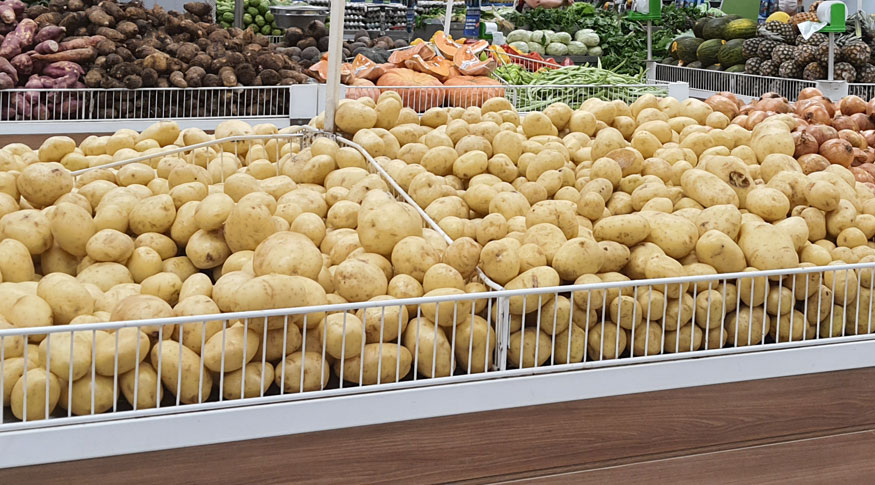IPCA
Inflation rises 0.42% in January, driven by increase in food prices
February 08, 2024 09h00 AM | Last Updated: February 08, 2024 02h50 PM

The country's inflation was 0.42% in January, after the 0.56% change recorded in the previous month. The increase in the first month of the year was especially influenced by the 1.38% increase in the food and beverages group, which has the greatest weight in the indicator (21.12%). With this result, food also had the biggest impact on the month's index (0.29 p.p.). The accumulated inflation in the last 12 months was 4.51%. The data comes from the Extended National Consumer Price Index (IPCA), released today (8) by the IBGE.
“The January result has, as it did in December, the food and beverage group as the main impact. The increase in food prices is mainly related to high temperatures and more intense rains in several producing regions of the country”, explains the survey manager, André Almeida. It is the biggest increase in food and beverages for the month of January since 2016 (2.28%).
In this scenario, food at home also became more expensive (1.81%), mainly influenced by the increase in the prices of carrots (43.85%), potatoes (29.45%), and carioca beans (9 .70%), rice (6.39%) and fruits (5.07%).
“Historically, there is an increase in food prices in the summer months, due to climatic factors, which affect the production, especially of fresh foods, such as tubers, roots, vegetables and fruits. This year, this was intensified by the presence of El Niño”, highlights Mr. Almeida.
“In the case of rice, there was the influence of adverse weather and concerns about the new harvest. Furthermore, India, the world's largest producer, faced climate issues that affected production and ceased exports in the second half of last year, which led to an increase in the price of this product on the international market,” he explains.
Eating away from home (0.25%) slowed down compared to December (0.53%), with less intense increases in snacks (0.32%) and meals (0.17%). In the previous month, the two sub-items had increased by 0.74% and 0.48%, respectively.
On the other hand, the transportation group, the second most important in the IPCA (20.93%), recorded deflation of 0.65%. “The biggest individual impact came from airfare, which had risen in September, October, November and December last year and fell 15.22% in January”, he highlights. In the last four months of 2023, there was a cumulative increase of 82.03% in this subitem.
Also in the transportation group, there was a drop in fuel prices (-0.39%), with drops in ethanol (-1.55%), diesel fuel (-1.00%) and gasoline (-0. 31%). Vehicle gas (5.86%) was the only fuel surveyed to increase in the month. “As gasoline is the subitem with the greatest individual weight in the IPCA, this price drop in January helped containing the general result of the index”, analyzes the manager.
In the health and personal care group (0.83%), there was an increase in personal hygiene (0.94%), with increases in skincare products (2.64%) and perfume (1.46%). Other highlights were health insurance plans (0.76%) and pharmaceutical products (0.70%). In turn, the increase in the housing group (0.25%) was driven by the increase in the prices of water and sewage fees (0.83%) and piped gas (0.22%), while residential electricity (-0.64%) fell.
INPC rose 0.57% in January
The increase in the National Consumer Price Index (INPC) was 0.57% in January, above that recorded in the previous month (0.55%). The index has accumulated an increase of 3.82% in the last 12 months. Food products went from 1.20% in December to 1.51% in January. Non-food products went from 0.35% to 0.27% in the same period. “The INPC result was above the IPCA due to the greater weight that the food and beverage group has in this indicator”, explains Mr. Almeida.
More about the survey
The IPCA covers families with incomes of 1 to 40 minimum wages, while the INPC covers families with incomes of 1 to 5 minimum wages, living in the Metropolitan Areas of Belém, Fortaleza, Recife, Salvador, Belo Horizonte, Vitória, Rio de Janeiro , São Paulo, Curitiba, Porto Alegre, in addition to the Federal District and the municipalities of Goiânia, Campo Grande, Rio Branco, São Luís and Aracaju. Please, access data on Sidra database. The next IPCA result, for February, will be released on March 12th.


















